Canberra bee rescue and removal
Each year we receive a large number of calls for swarm removal and relocations in the ACT. Generally the swarms are located soon after swarming and are simple to remove. In some cases, swarms can go unnoticed for weeks (and at times months) leading to the swarms establishing natural comb and in many instances a complete hive in the swarm location.
In these instances, a much more involved process is undertaken to rehome the hive and the established bee colony into manageable hives to ensure the strength of the hive is maintained after it is transferred.
Below are photos taken from the relocation of these established hives at the end of the swarm season.
It was late afternoon in the pouring rain and a colony of bees were found openly exposed to the elements hanging from a tree branch. With the hive too large to drop directly into a standard Langstroth hive, a larger custom box was created using two brocolli boxes. With the combined depth of the brocolli boxes, the branch could be removed in a single piece and the hive was then suspended in the box to protect it from the elements. As the hive was collected late in the season, the decision was made to not disturb the colony through winter and instead re-home it at the start of the next season.
The makeshift bee hive with a small opening and landing board
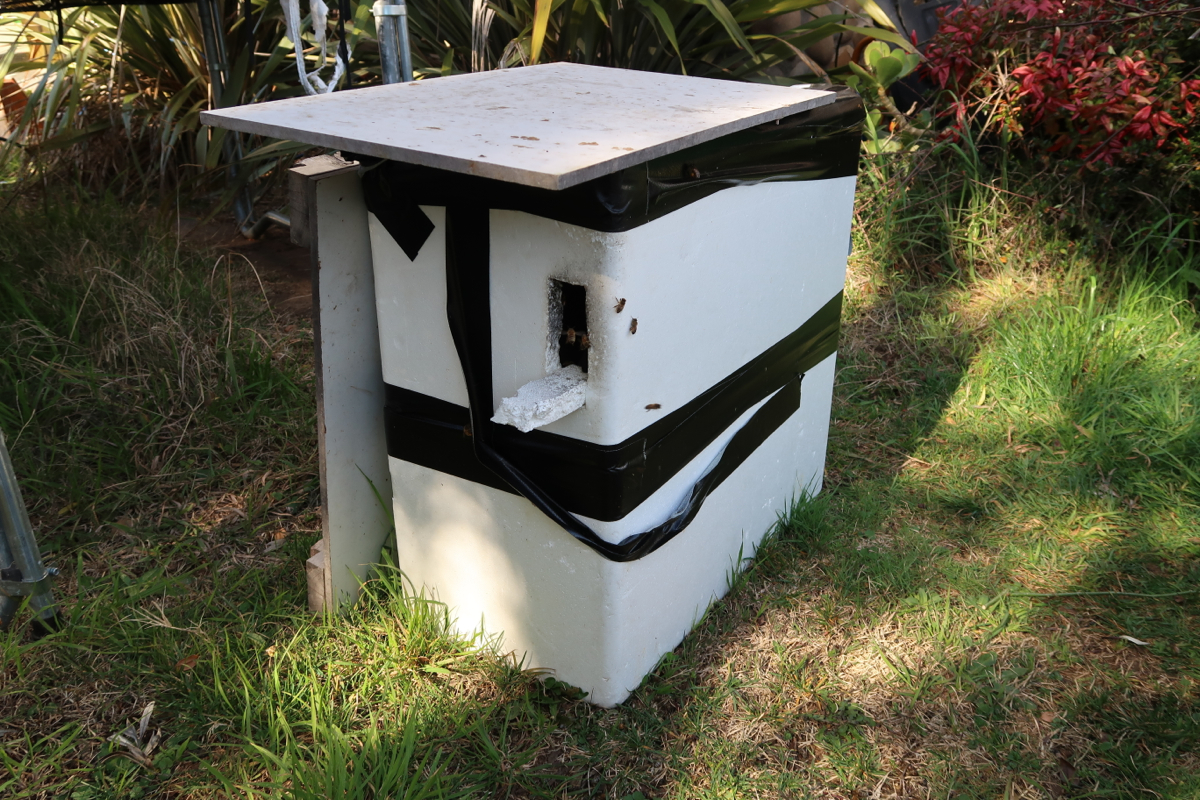
The complete hive suspended from the original branch it was recovered on
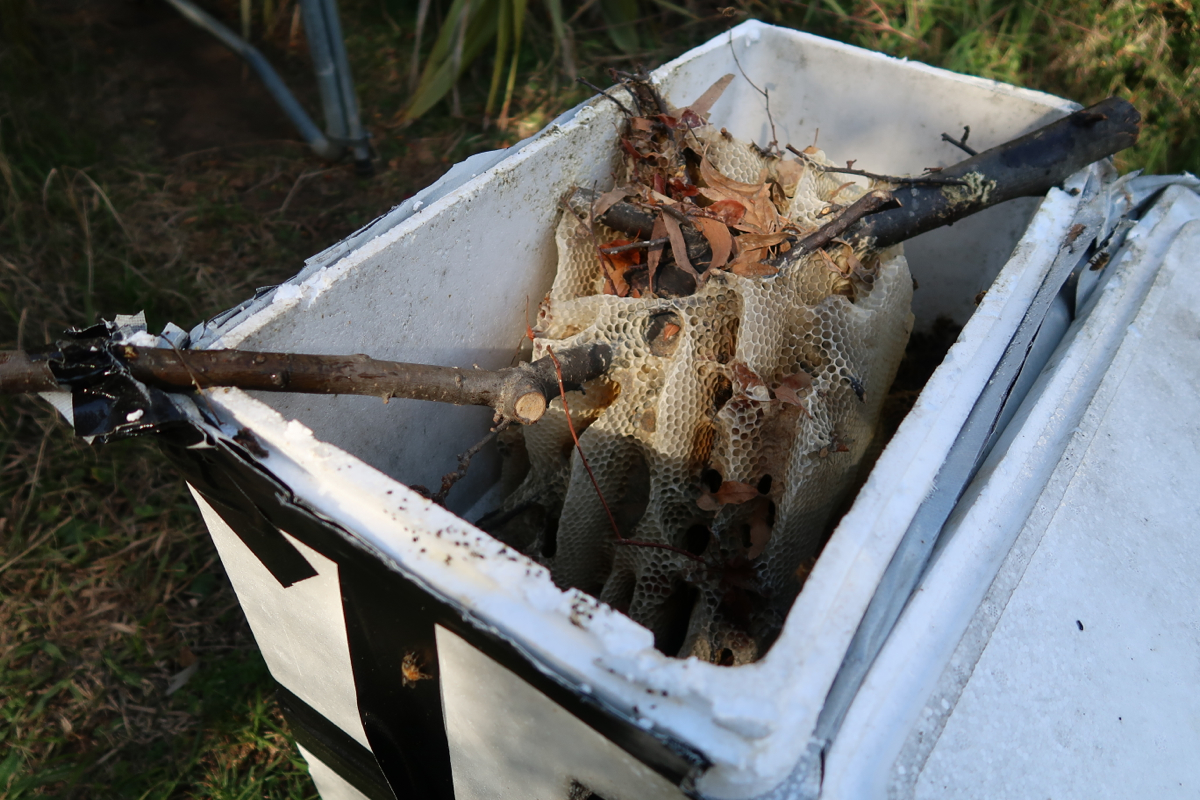
View inside the hive showing new comb built to the edges of the box
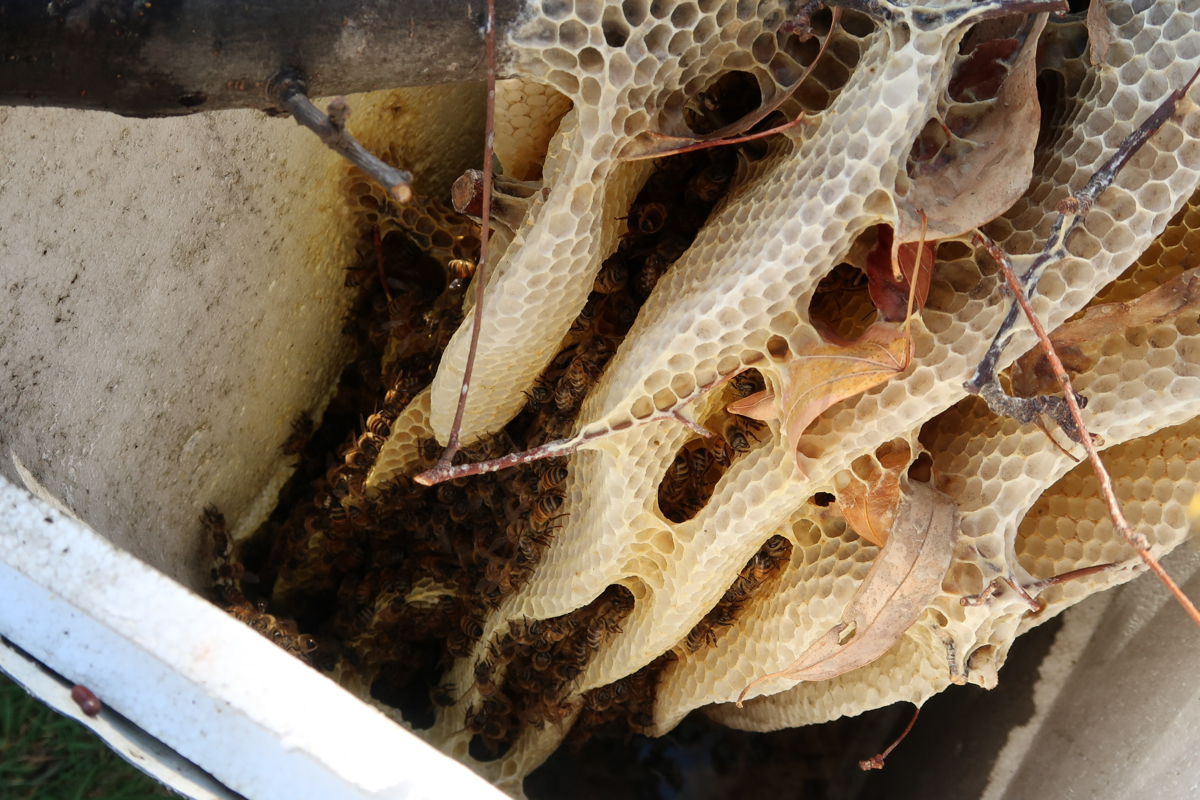
The comb was carefully removed from box revealing several layers of new brood
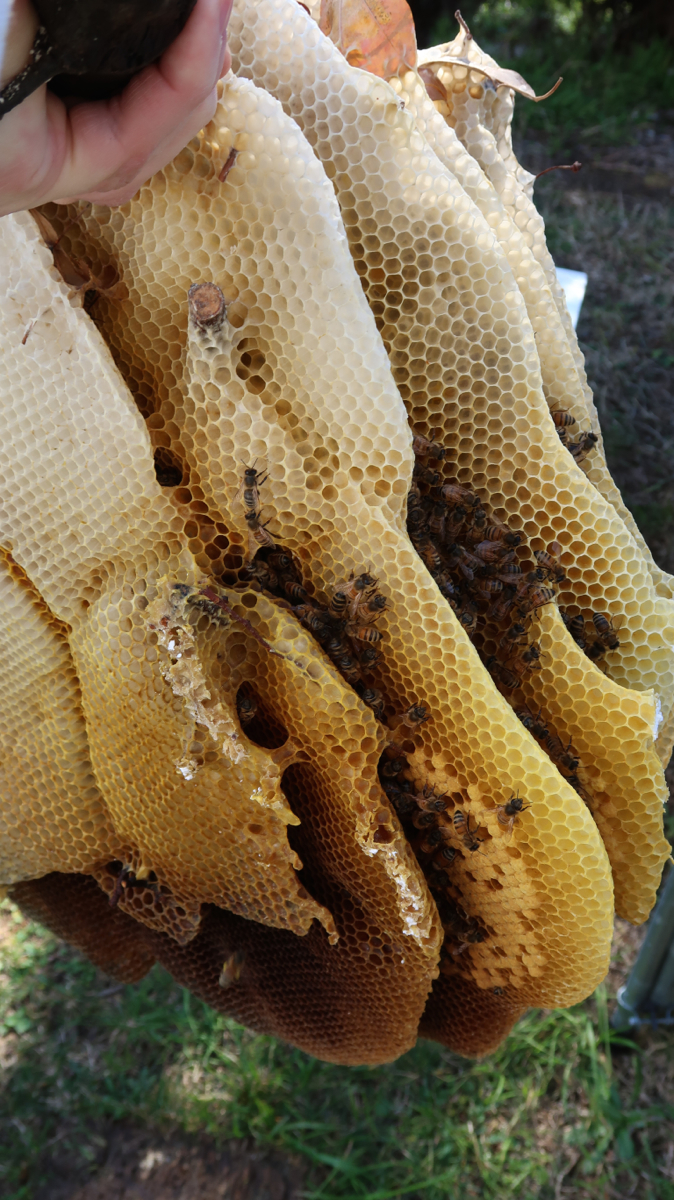
Cutting away the outer comb revealed honey stores and more patches of brood
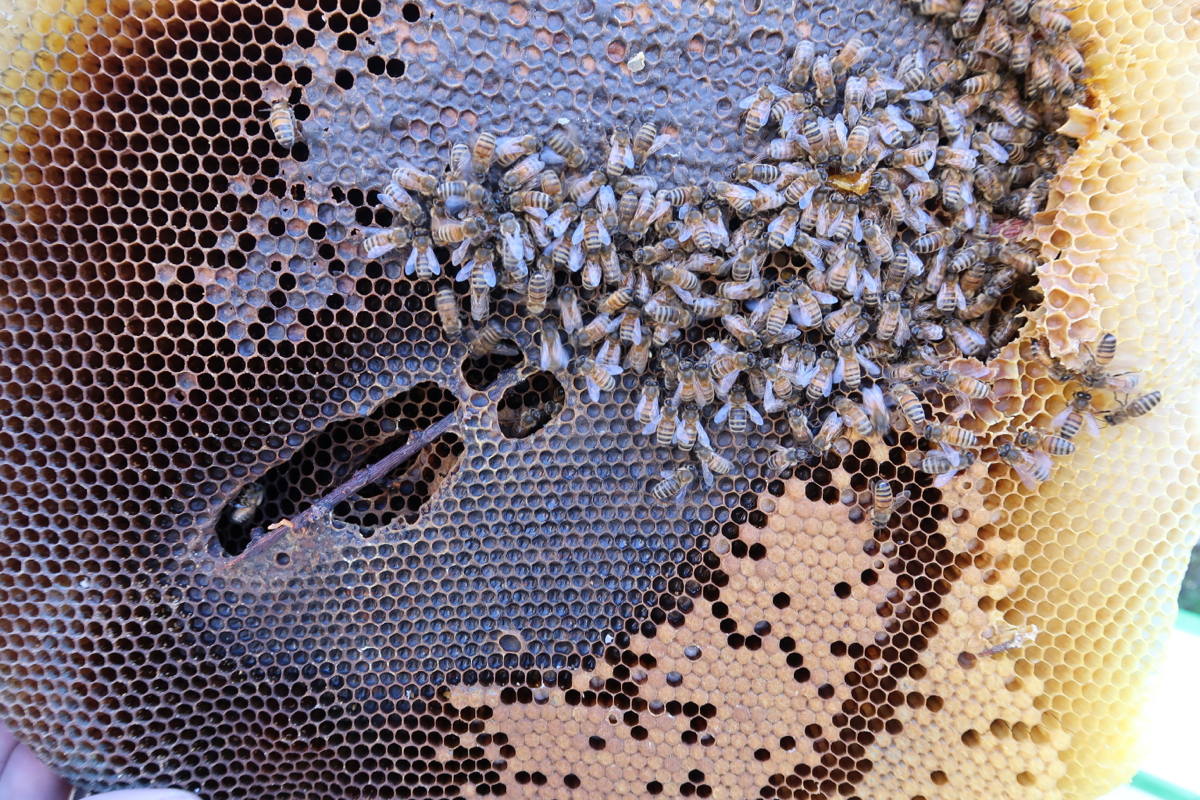
The hive was placed upside down to further inspect the comb and locate the queen
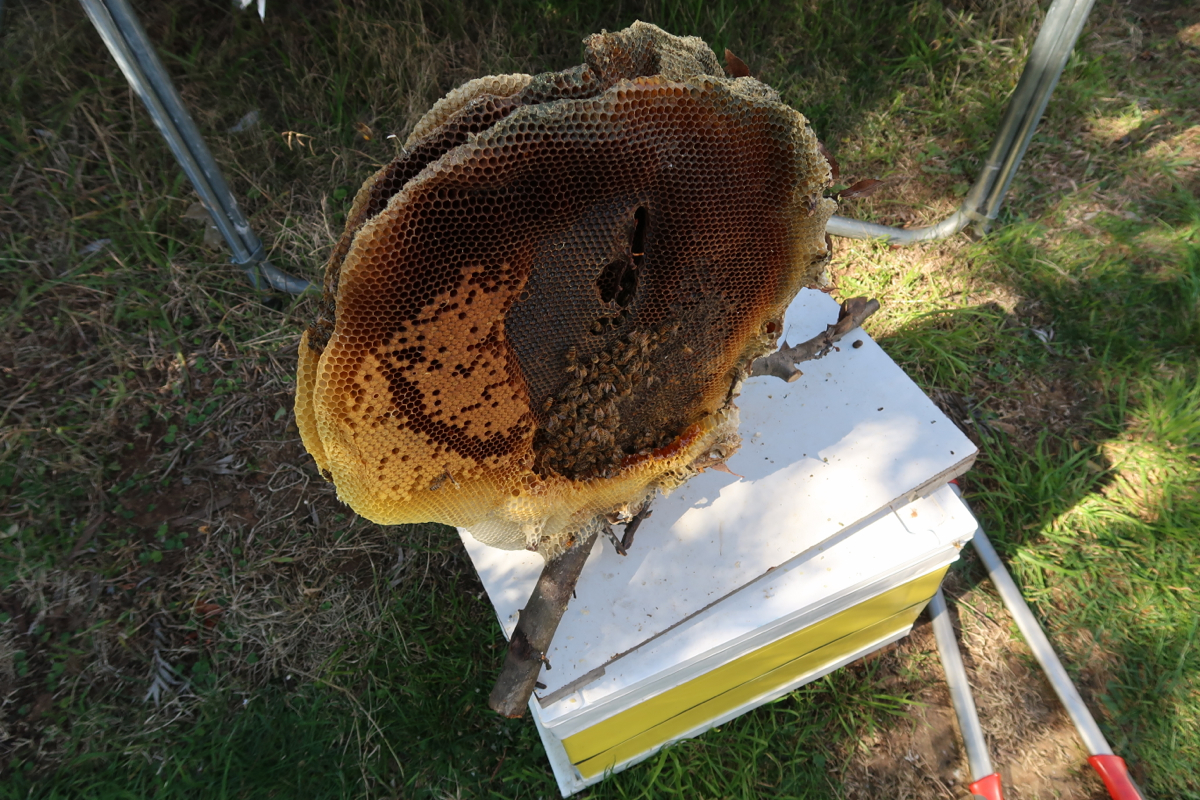
The queen can be seen at the right of the comb in the following photo
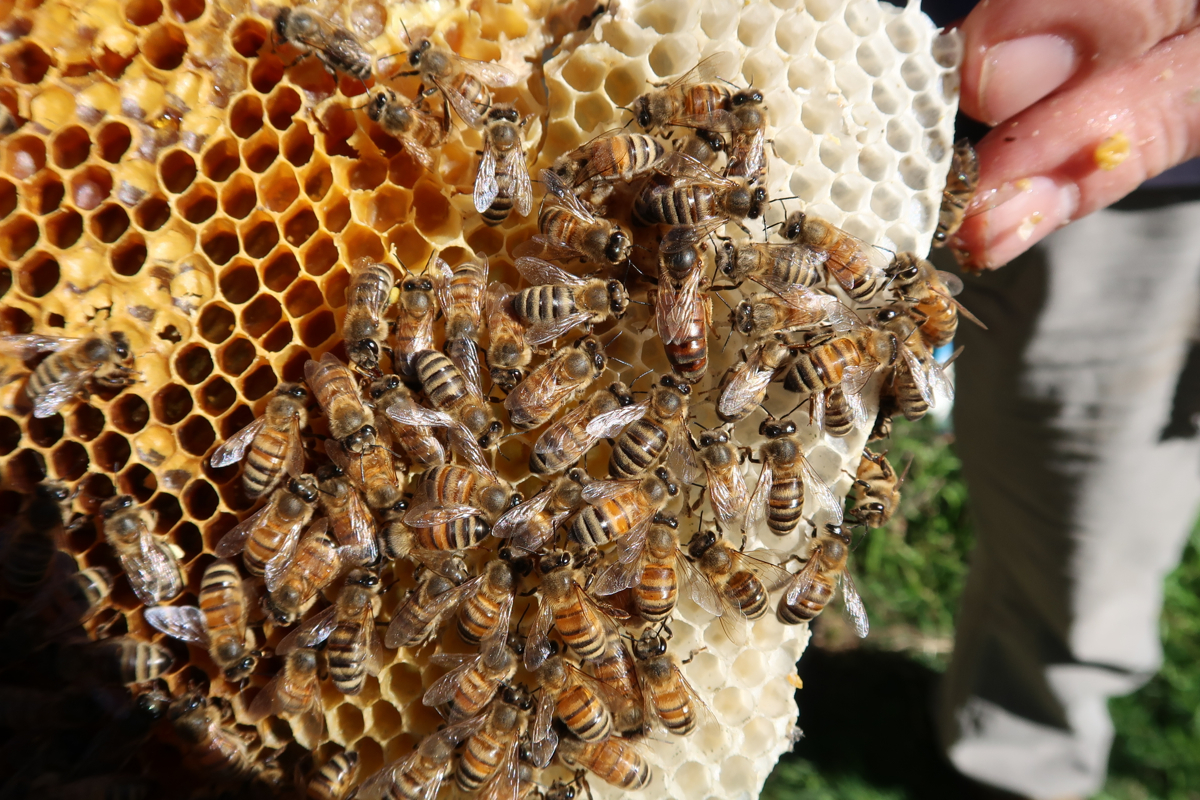
There were large sections of dense brood throughout the comb
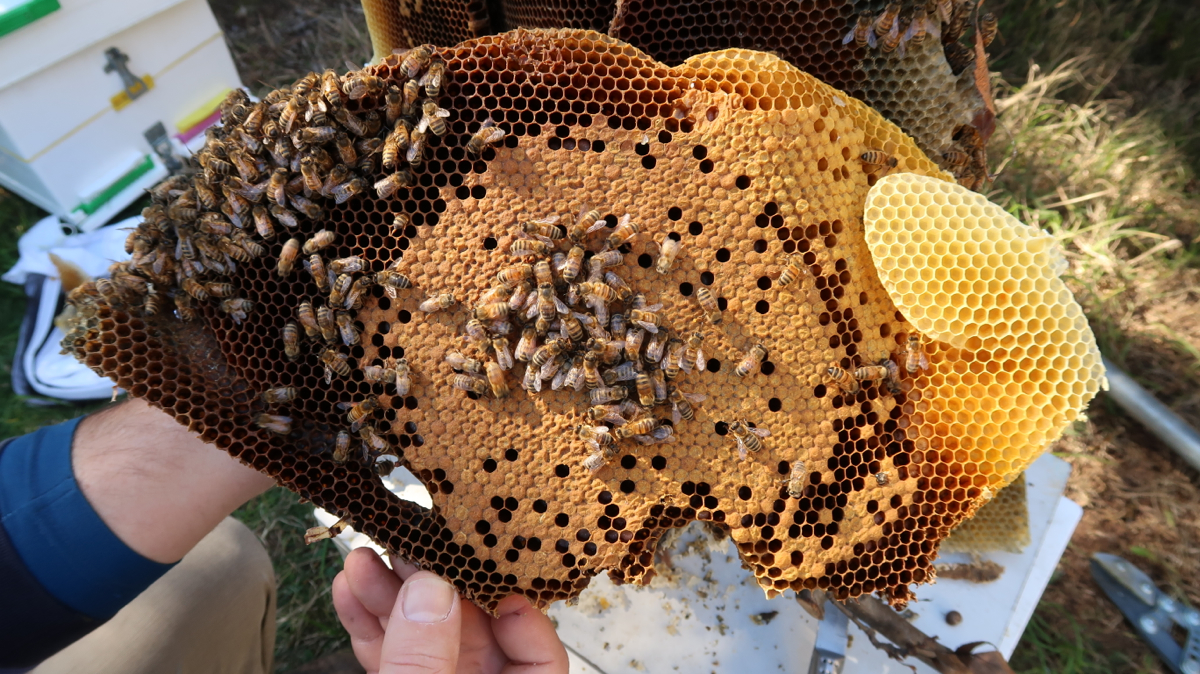
The remaining comb was carefully cut into frame sized sections saving as much brood as possible
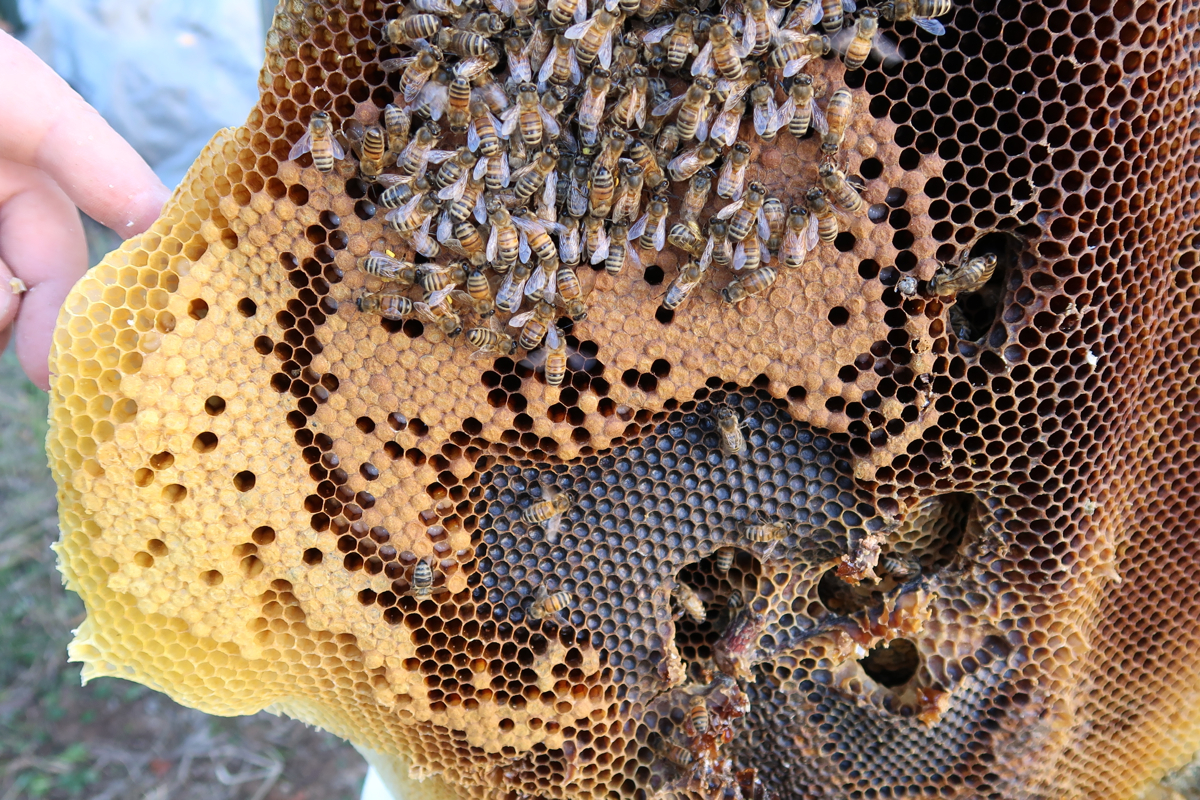
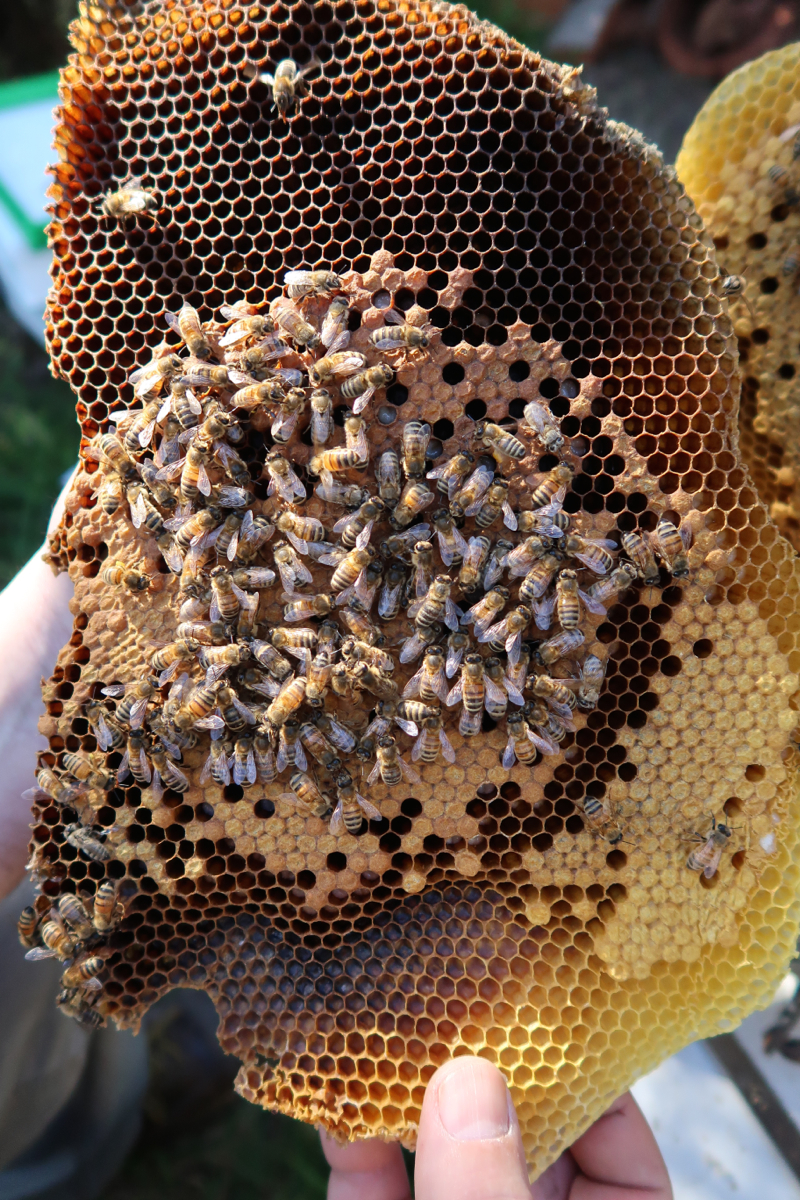
The comb sections were placed into Langstroth full depth frames and held in place with rubber bands
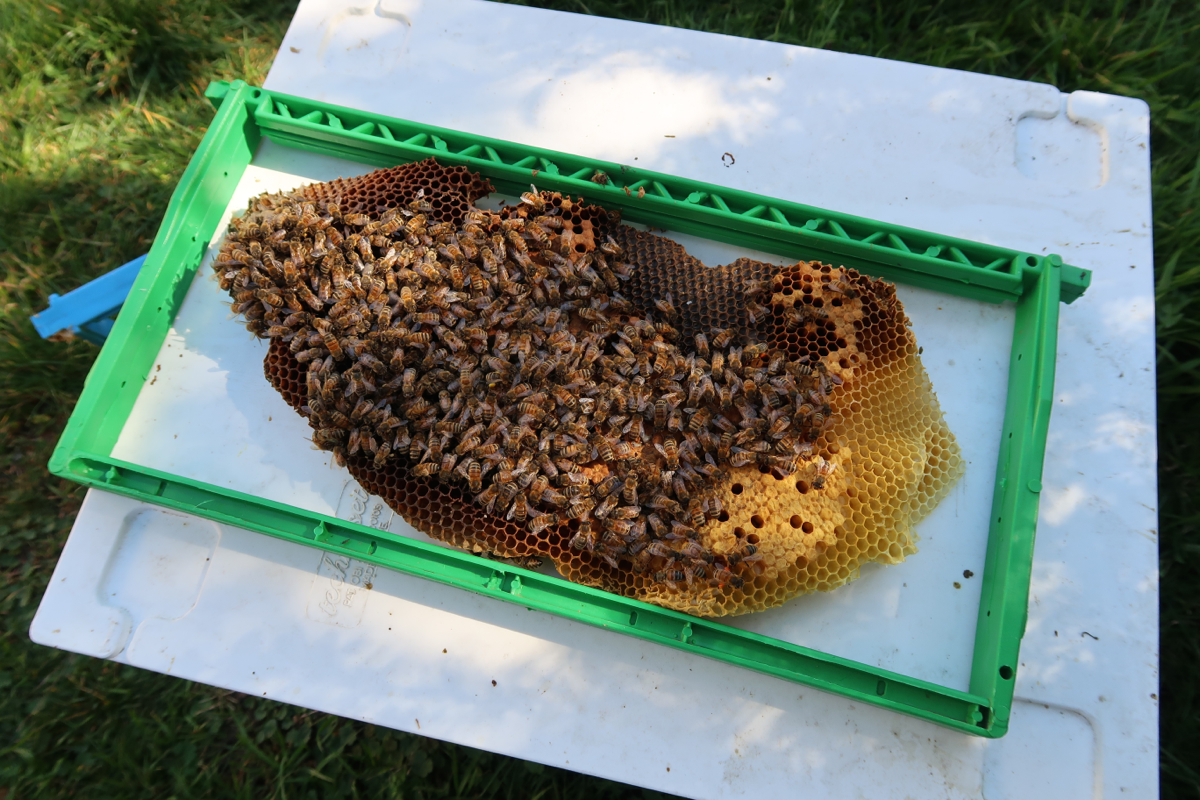
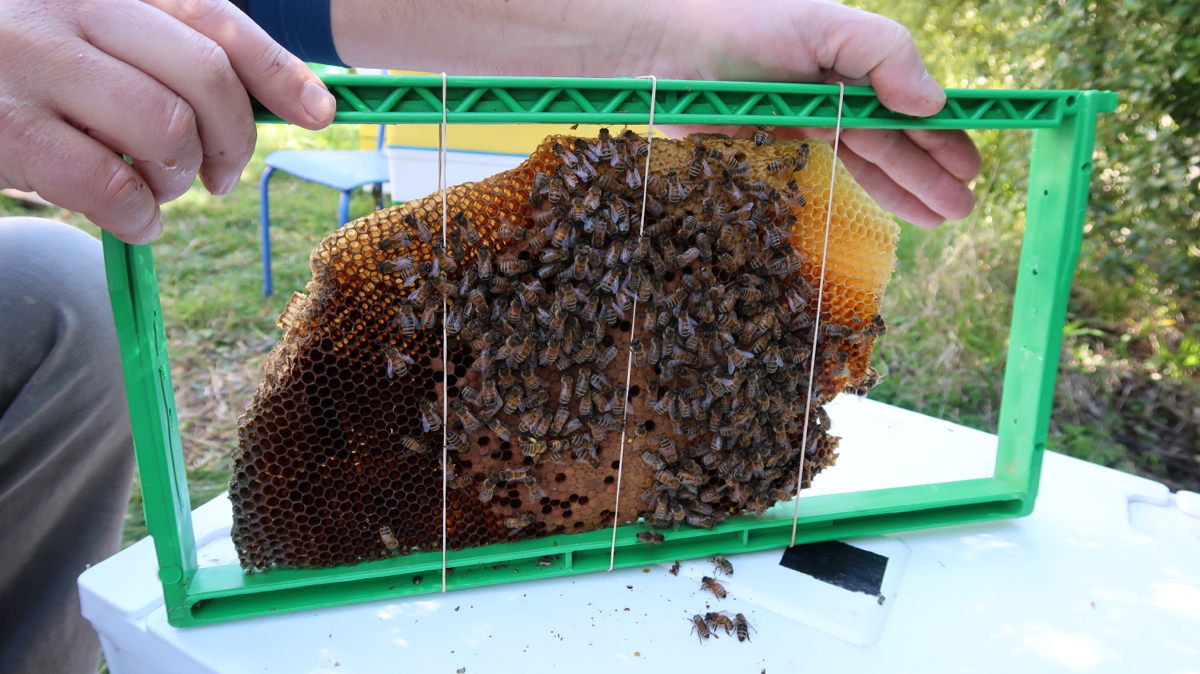
Once mounted in standard frames, the comb was placed in a full depth Langstroth hive
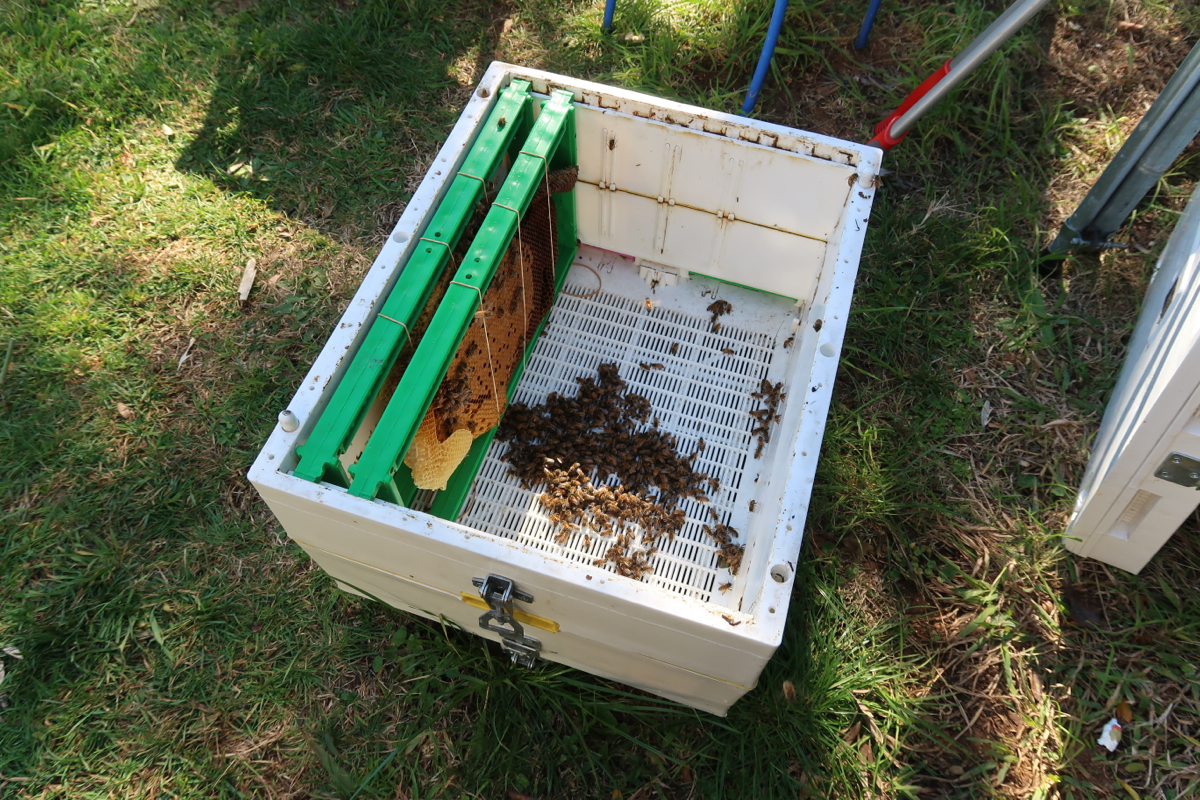
The rescued comb was interleaved with wax foundation to provide the colony with room for expansion
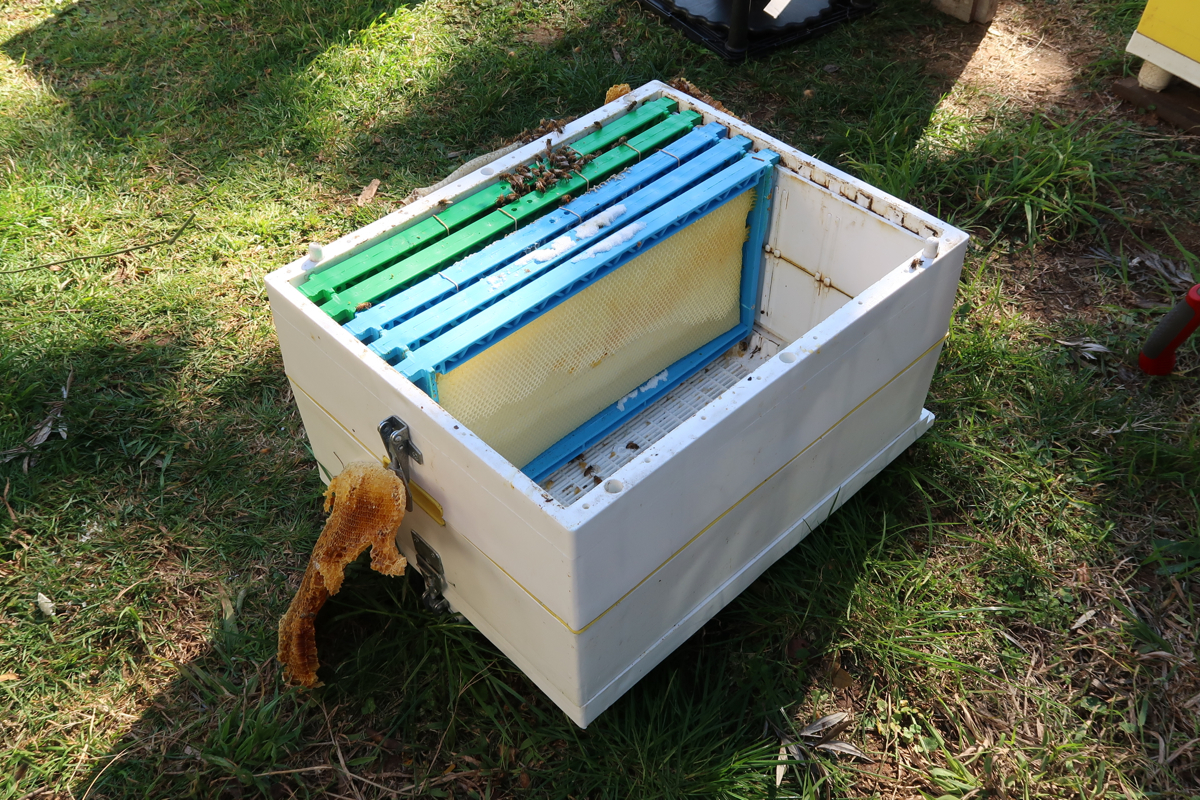
The cut away comb remaining on the branch shows the naturally created bee space between combs
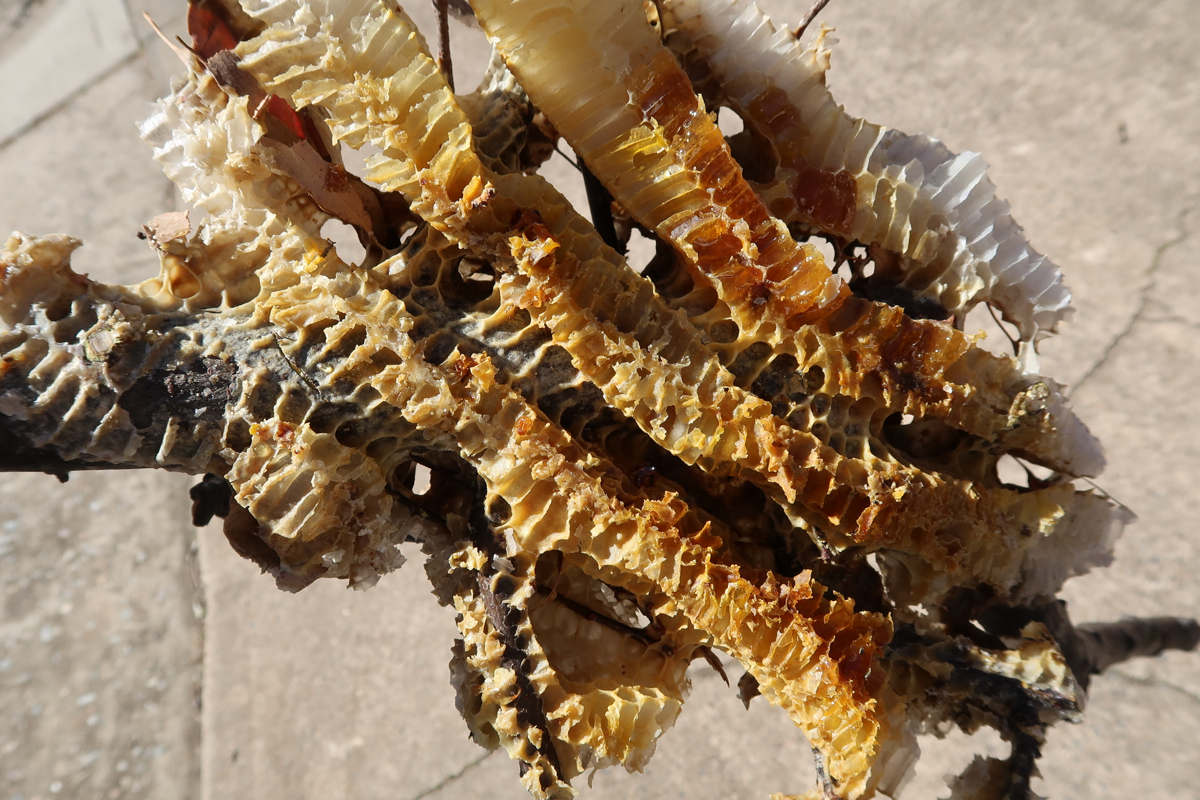
In these instances, a much more involved process is undertaken to rehome the hive and the established bee colony into manageable hives to ensure the strength of the hive is maintained after it is transferred.
Below are photos taken from the relocation of these established hives at the end of the swarm season.
Branch in a broccoli box from Charnwood
A phone call unusually late in the swarm season for an established hive resulted in the following series of photos.It was late afternoon in the pouring rain and a colony of bees were found openly exposed to the elements hanging from a tree branch. With the hive too large to drop directly into a standard Langstroth hive, a larger custom box was created using two brocolli boxes. With the combined depth of the brocolli boxes, the branch could be removed in a single piece and the hive was then suspended in the box to protect it from the elements. As the hive was collected late in the season, the decision was made to not disturb the colony through winter and instead re-home it at the start of the next season.
The makeshift bee hive with a small opening and landing board

The complete hive suspended from the original branch it was recovered on

View inside the hive showing new comb built to the edges of the box

The comb was carefully removed from box revealing several layers of new brood

Cutting away the outer comb revealed honey stores and more patches of brood

The hive was placed upside down to further inspect the comb and locate the queen

The queen can be seen at the right of the comb in the following photo

There were large sections of dense brood throughout the comb

The remaining comb was carefully cut into frame sized sections saving as much brood as possible


The comb sections were placed into Langstroth full depth frames and held in place with rubber bands


Once mounted in standard frames, the comb was placed in a full depth Langstroth hive

The rescued comb was interleaved with wax foundation to provide the colony with room for expansion

The cut away comb remaining on the branch shows the naturally created bee space between combs
